Affecting the appearance of two molded pilasters in the Antique style, they present a sumptuous decoration of grotesques. This type of decoration, typical of the Renaissance, finds its source in the discovery of the frescoes of the ancient Palace of Nero (the Domus Aurea) in Rome, around 1480. Composed of winding foliage, interlacing, draperies, hybrid or even animal creatures, these whimsical composite motifs freely adorning surfaces were quickly copied and transposed by Italian artists, in particular by Raphael on the the Vatican Lodges, and distributed throughout Europe in the form of engravings and drawing books models. Our sculptor certainly relied on one of them to make these pillars, which find certain equivalences within the most beautiful monumental altarpieces of Valladolid or Huesca, in the North-West of Spain. The quality of the sculpture and the extreme refinement of the polychromy of our consoles make them true works of art in their own right, testifying to the talent of the sculptors of the Spanish Golden Age




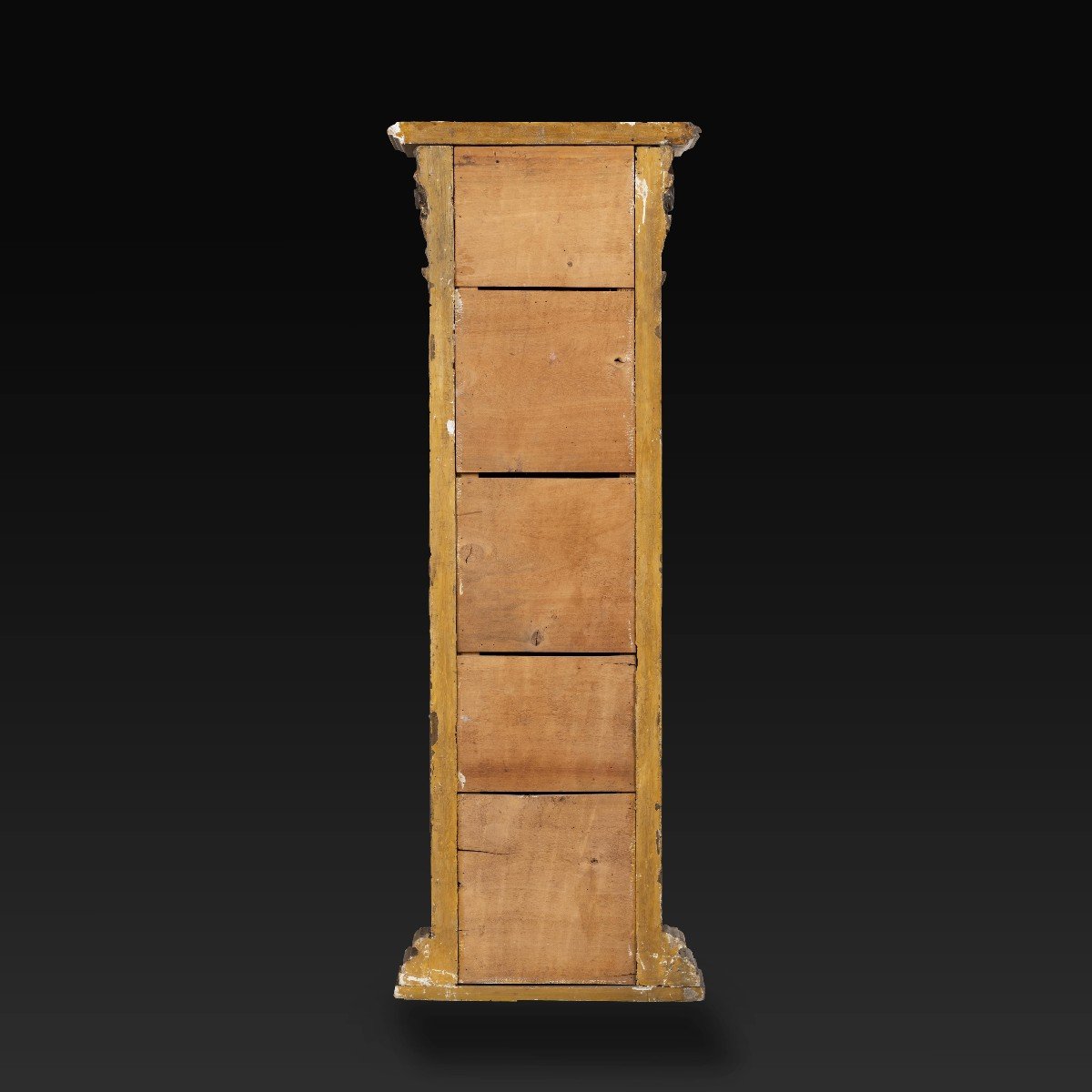

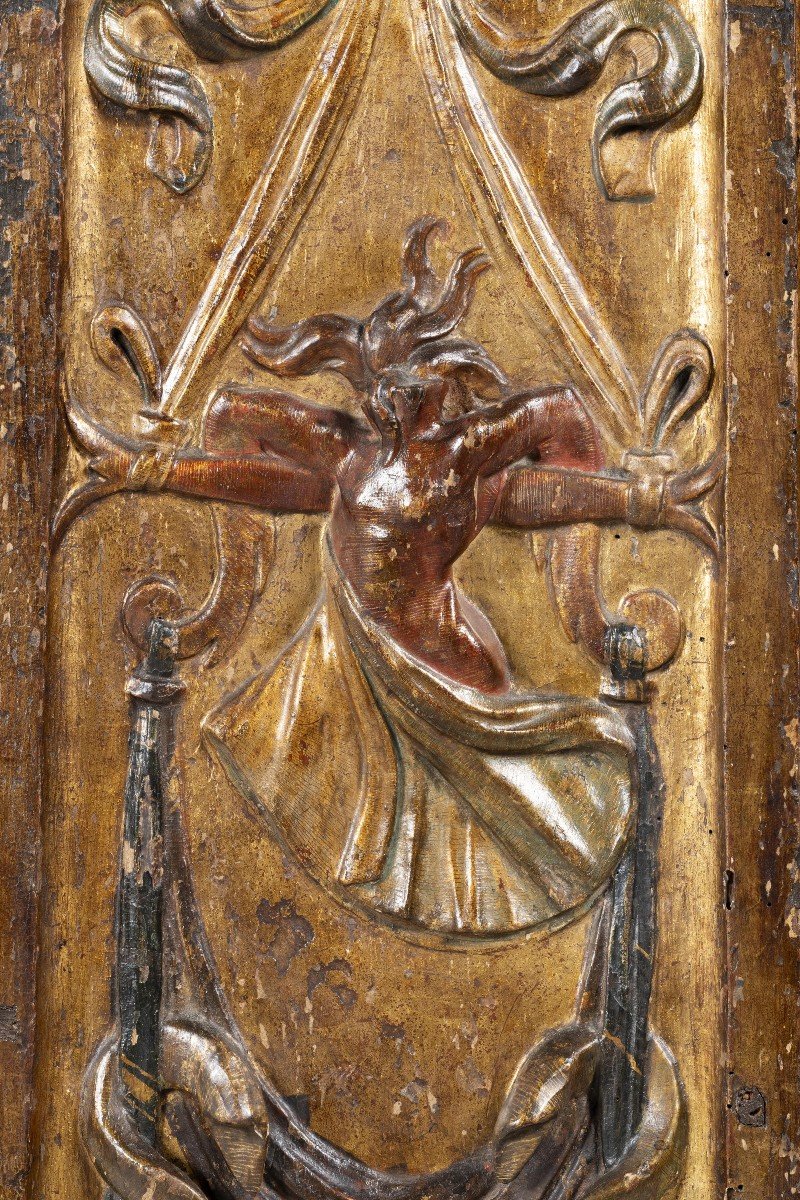

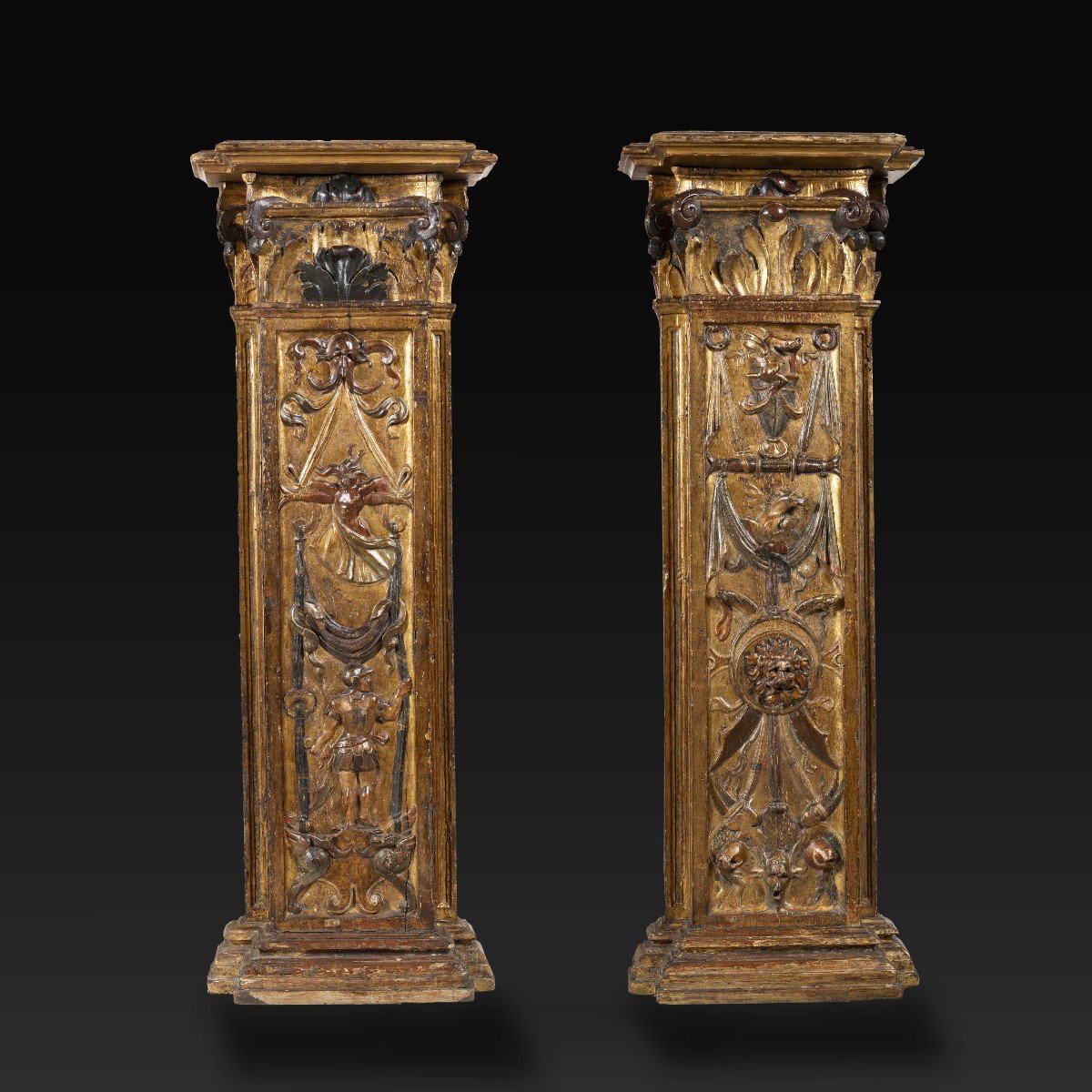
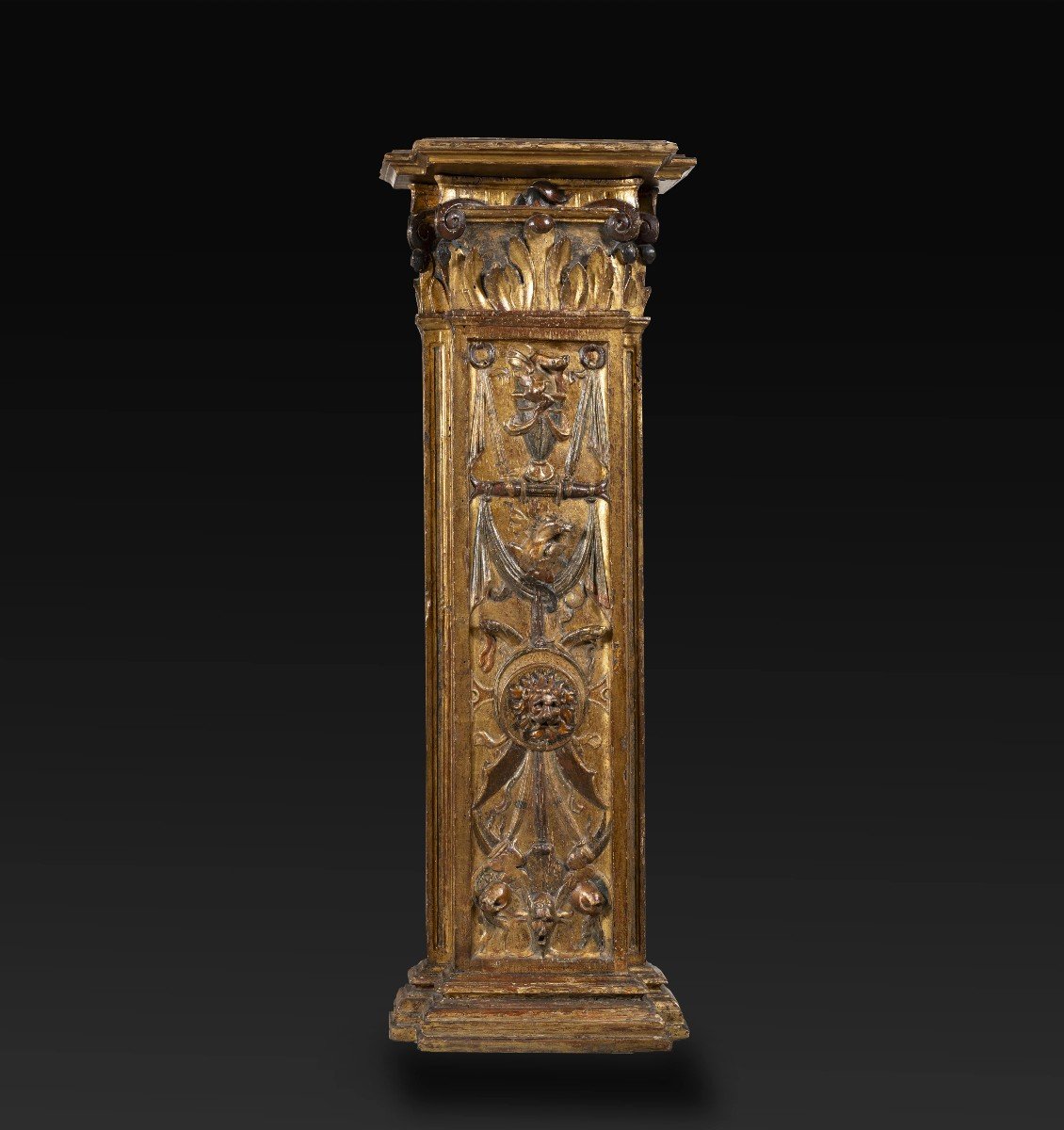

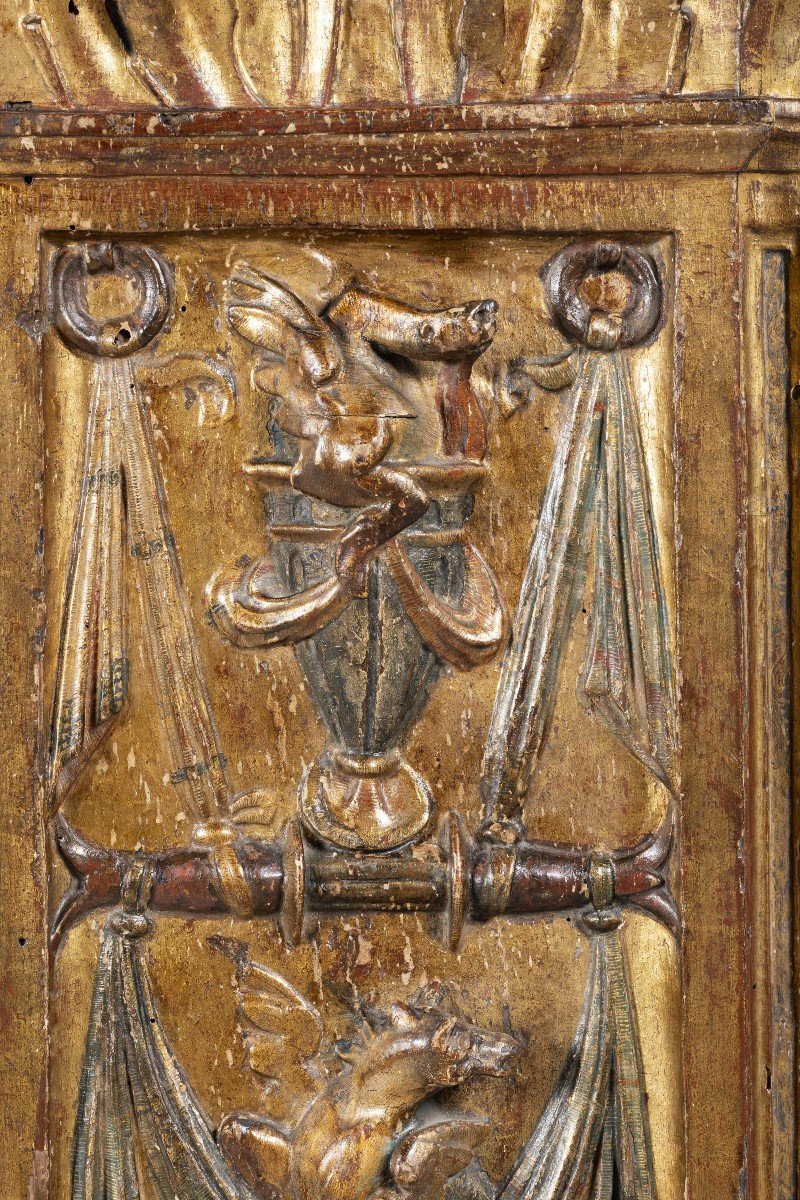

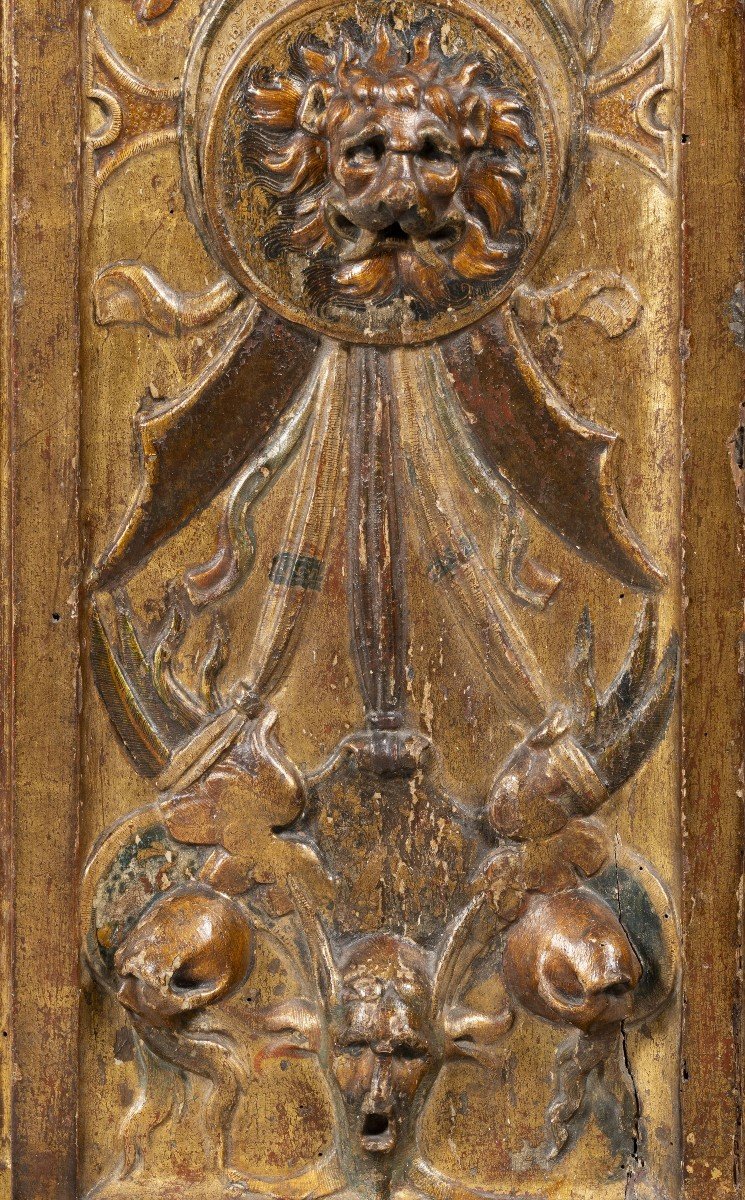
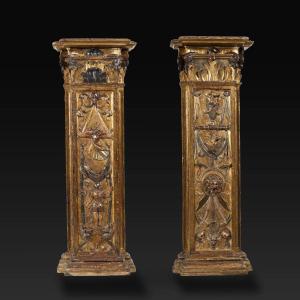














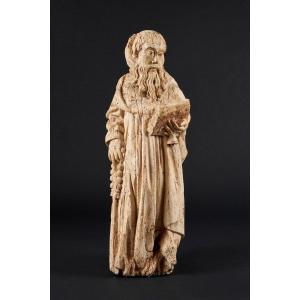


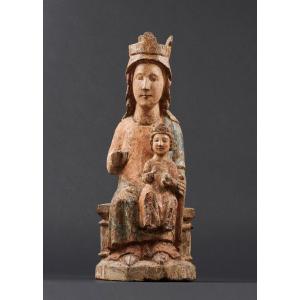
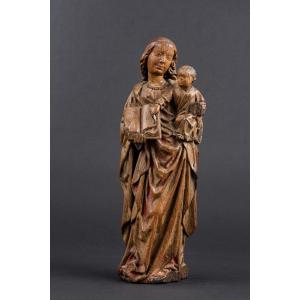





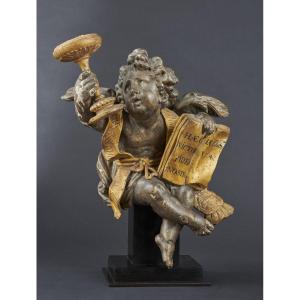


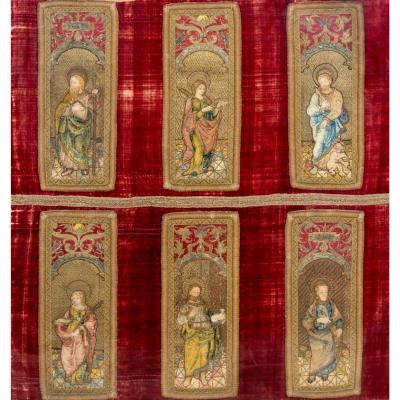

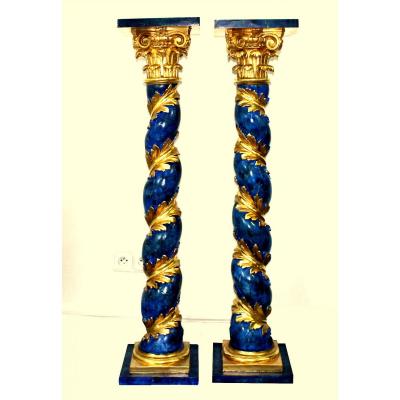
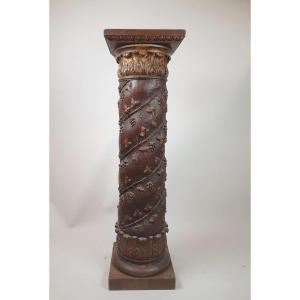





 Le Magazine de PROANTIC
Le Magazine de PROANTIC TRÉSORS Magazine
TRÉSORS Magazine Rivista Artiquariato
Rivista Artiquariato